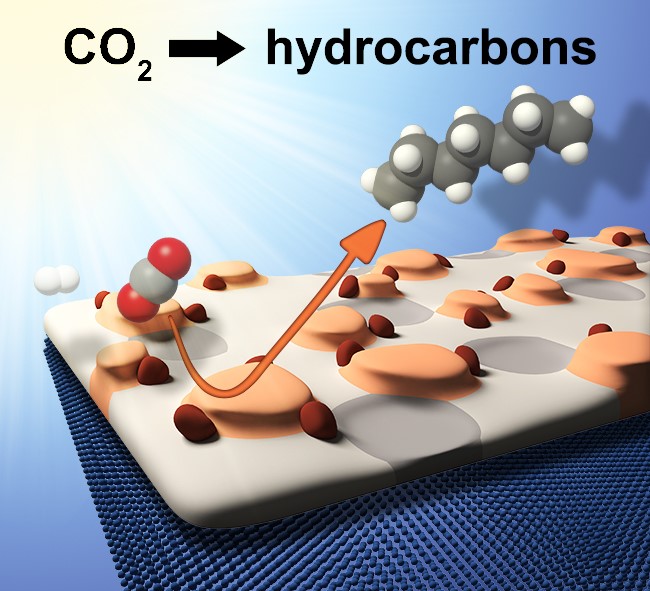Chinese researchers recently prepared a series of Fe-containing catalysts from MgFeAl Layered Double Hydroxide (LDH) nanosheet by thermal reduction with H2 at temperatures ranging from 300 °C to 700 °C. The new discovery is applied to the light-driven reduction of CO2 to value-added hydrocarbons for the first time.
This research, published online in Adv. Energy. Mater., was directed by Prof. ZHANG Tierui from Technical Institute of Physics and Chemistry (TIPC) of the Chinese Academy of Sciences.
Catalytic reduction of CO2 to value-added hydrocarbons is one of the most important chemical industrial processes in human society. But the traditional operation causes high energy consumption. In the pursuit of low-energy consumption of CO2 hydrogenation, solar-driven photothermal catalysis for the production of solar fuels has been attractive and popular in the past few years.
According to ZHANG et al., nanometal with specific catalytic properties can achieve photothermal catalysis by absorbing incident photons and localized heating to even several hundred degrees. Fe-based catalysts without alloy added benefits in conversion of CO2 to higher selectivity value-added hydrocarbons depending on the modulation of the Fe active sites structure.
In this work, by controlling the reduction conditions, researchers found a series of Fe-based catalysts with unique interfacial structure and good performance for photothermal CO2 hydrogenation to C2+ hydrocarbons at atmospheric pressure. It shows a new approach for synthesis of value-added hydrocarbons by using abundant solar-energy. Besides, the discovery is expected to bring further research which aims at photothermal catalyst development for selective CO2 conversion.
“By considering the sustainable development requirement, the method we demonstrate may also bring new opportunities in the field of solar-driven green chemistry in the future,” commented by Prof. ZHANG.
This work was supported by the National Science Foundation of China, and the International Partnership Program of Chinese Academy of Sciences (GJHZ1819).

Figure 1 FeOx/Fe for reduction of CO2 to value-added hydrocarbons (Image by ZHANG et al.)
http://doi.org/10.1002/aenm.202002783
NEWS